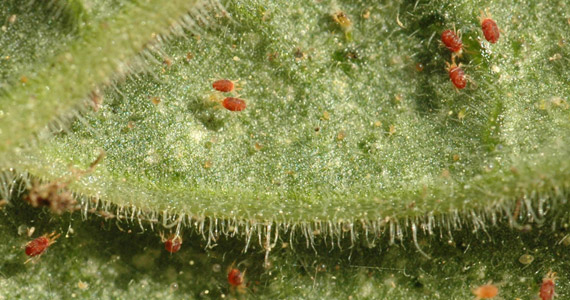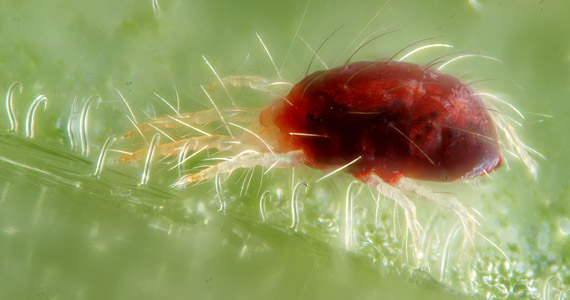Spider Mite - Pests and Diseases

Spider mites have needle-like sucking mouthparts. They feed by penetrating the plant tissue with their mouthparts. Large populations can even cover entire plants with their webs. These webs are used to move. Since spider mites are so small they can easily be moved by fans.
Briefly about the plague
- What are Spider Mites?
- Spider mites are not insects and are, in fact, more closely related to spiders. They belong to the class Arachnida.
- What is there to see?
- Spider mites usually make a silken web. When plant leaves are infested with spider mites, they damage the plant tissue. This causes yellowing and dead spots that merge until eventually the entire leaf is affected. The foliage will turn yellow, wilt and eventually fall off. There are some species of spider mites that do not spin webs and that live in the tips of the plant's buds. Here you won't see the damage until the top expands.
- What can be done about it?
- Spider mites have several natural enemies that can be used to control the population.
Biological cycle of spider mites
Each female spider mite lays 10 to 20 eggs per day and 80 to 120 during her entire life cycle of up to four weeks. These are usually attached to the silk web. The larvae, with 6 legs, hatch after 3 to 15 days. The newly hatched larvae are colorless and have bright red eyes. They change shape three times in 4 to 5 days: First a protonymph, then a deutonymph and finally they get the adult form. Both the adult mites and the nymphs have eight legs.

Symptoms of the plague
The first visible symptoms are small yellowish dots or white spots, mainly around the midrib and larger veins of the leaves. As these spots enlarge and merge, the empty cells give some parts of the leaf a whitish or silvery transparent appearance.
How to avoid the plague?
Try to minimize the risk and rapid spread of spider mites by keeping the temperature low (60%) as this will slow down the rate of reproduction. A higher humidity level is also necessary for the enemies of the spider mite. Keep the areas where the plants grow clean and remove leaf litter. Adequate irrigation is important, as underwatered plants are more likely to suffer damage. The plant can be sprayed with CANNACURE to control spider mites.

Solutions to get the plague under control
Remove the affected leaves, which can be recognized by the silk webs on top of the leaves. Rinse the plant thoroughly with a mixture of alcohol and soap. Repeat this treatment several times a week or use a natural product such as CANNACURE to fight the plague. If water based treatment is no longer desired, remove the webs with a vacuum cleaner.
You can also use natural enemies such as: predatory mites, ladybugs, predatory bugs and lacewings.


